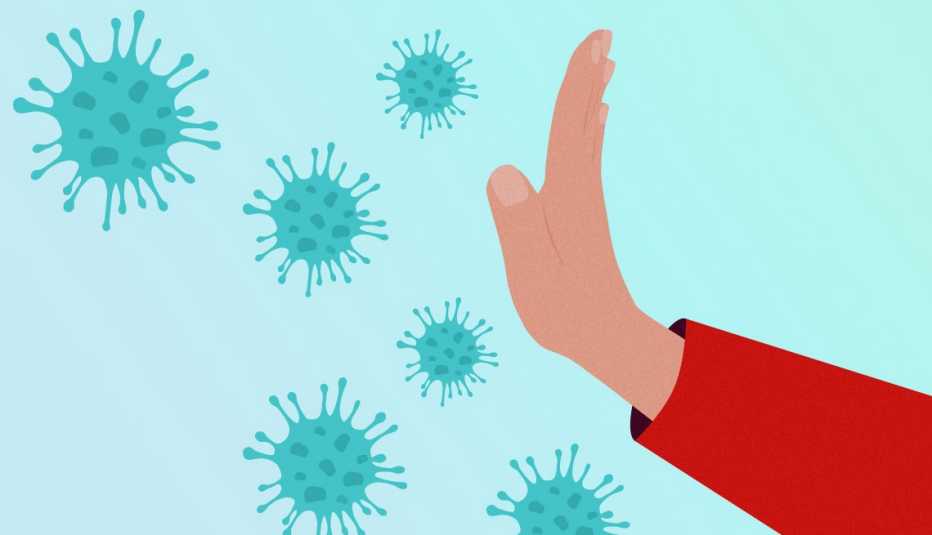AARP Hearing Center


If there’s one thing we can agree on, it’s that nearly three years of pandemic living has left us sick of sickness. But as sure as fall leads to winter, so will virus season soon be upon us. COVID-19 variants now outnumber Tom Brady’s Super Bowl wins, the flu’s latest model is in the showroom, and more than 200 viruses lurking out there are capable of causing the common cold.
Here’s the thing: You have the power to reduce your risk of getting sick significantly.
What’s important is to start taking the precautions you need today to reduce your risk of getting a cold, the flu and COVID, and make it through the winter healthy and safe. So we called up the experts and pressed them to answer some of your most common questions.
1. COVID seems much milder now. Do I still have to worry about it?
How to Score Cheap COVID Tests
The federal government no longer offers free at-home tests, but you can find COVID testing on the cheap.
- Via insurance or Medicare: Health insurance or Medicare Part B plans cover as many as eight over-the-counter COVID-19 tests each month. Your plan may have preferred outlets where you can get tests for free, but you can also get reimbursed up to $12 for each individual test. Go to medicare.gov for a list of participating pharmacies.
- From your doctor: Medicare covers you when you get a COVID-19 test from a lab, doctor, pharmacy or hospital.
- Community testing sites: Certain health centers and pharmacies offer low- or no-cost tests through the Department of Health and Human Services. Visit hhs.gov to find a testing location near you.
While the majority of Americans have gotten COVID at least once, the virus that causes it, SARS-CoV-2, continues to evolve and mutate, sending thousands of people to the hospital every day.
No one knows exactly where this bug is headed, says Panagis Galiatsatos, M.D., an assistant professor of pulmonary and critical care medicine at Johns Hopkins School of Medicine. He’s predicting more cases as the weather cools, with a potential wave of yet another subvariant of the omicron variant.
You already know the immune system weakens with age, making infections more precarious and recovery time longer. More than 75 percent of COVID deaths have been in those age 65 and over, a risk that increases if you have underlying medical conditions.
But there’s another issue to keep in mind: A prolonged recovery time — and the bed rest that can go with it — puts you at an increased risk for a cadre of complications, from loss of muscle mass and strength to prolonged immobility and falls, leading to a potential downward spiral. That’s true for COVID, the flu and even the common cold.
“Trying to fight your way back to where you were before can be a tremendous battle,” says Magdalena Bednarczyk, M.D., section chief of geriatric medicine at Rush University Medical Center. “For a fit, younger adult, a common cold or the flu could be an inconvenience. For a frail older adult, it can literally knock them off their feet,” she says.
Bottom line on COVID: It’s still out there, it’s serious, and it’s not alone.

































































More on health
What You Need to Know About the Coronavirus
The latest news on COVID-19 and answers to frequently asked questions
What to Know About the Coronavirus Vaccines
Questions continue as millions of Americans get immunized
7 Factors That Make Flu More Deadly
What to know if you have risk factors like heart disease, diabetes or cancer